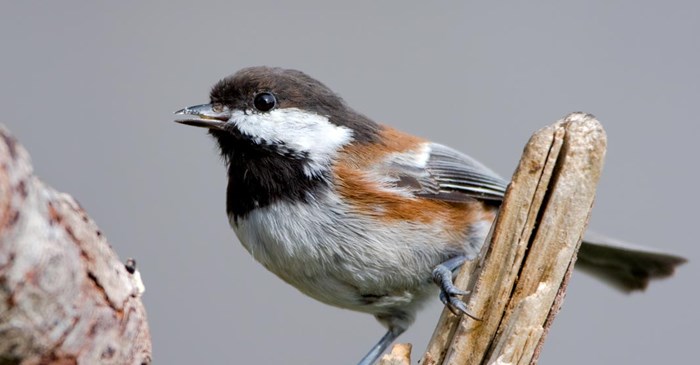Among the trees of the old-growth forests lining the Pacific Coast lives a unique species of chickadee you won’t find anyplace else: the Chestnut-backed Chickadee. While their behaviors and sounds will be familiar to anyone who knows anything about chickadees, these facts about the Chestnut-backed Chickadee will help you appreciate their presence if you encounter them while hiking through their specific habitat.
How to find the Chestnut-backed Chickadee
Of North America’s seven chickadee species, the Chestnut-backed Chickadee is the smallest and most colorful, sporting caps of deep brown and rust-colored flanks and backs. They live in coniferous and deciduous forests along a narrow 3,000-mile stretch up along the Pacific coastline, starting near Santa Barbara, California, and ending in Alaska. They’re also found within an inland pocket of forest that covers sections of Washington, Idaho, Montana and Canada’s British Columbia. Unlike other chickadees, they don’t whistle a song to attract mates and defend their territories but do have a distinct take of the familiar chick-a-dee call that's squeaky and high pitched.
What are the nesting habits of the Chestnut-backed Chickadee?
Like other chickadees, they build their nests in the protective enclosure of a tree cavity. However, the Chestnut-backed Chickadee does things slightly different, by lining their nests with a half-inch layer of animal fur or hair, woven with bark strips, grass, and feathers. When the parent leaves the nest, it will place a layer of fur over the eggs to keep them warm and covered. If a predator gets too close to the eggs or nestlings, the adults will flutter their wings and make hissing sounds.
What does the Chestnut-backed Chickadee eat?
The Chestnut-backed Chickadee eats mostly insects and spiders, spending summer days hopping among the branches, starting at the bottom of the tree and working their way to the top. They’re year-round residents but may migrate short distances in the winter in search of more abundant food supplies. During this time, they often join forces with the Mountain Chickadee, serving as the ringleaders and announcers of mixed foraging flocks that are also comprised of nuthatches, kinglets and Brown Creepers, searching for seeds and berries.
How can I attract Chestnut-backed Chickadees to my yard?
The Chestnut-backed Chickadee will also visit home feeders in search of a high-protein, fulfilling meal. Draw in these colorful cuties by setting out fresh, high-quality ingredients like the sunflower seeds, pecans, pistachios, and shelled peanuts found in Lyric Chickadee Mix. Then delight in watching these social climbers acrobatically flip and flit through the air!
